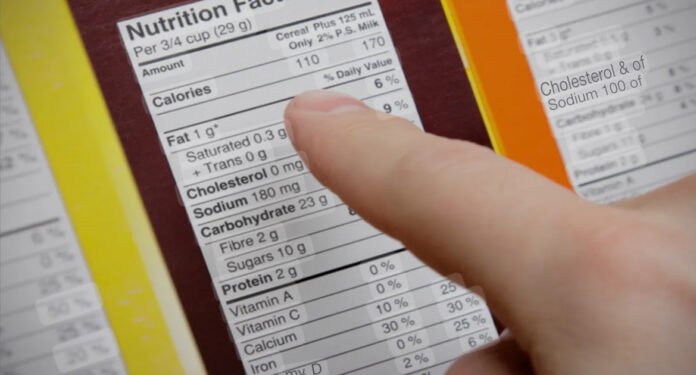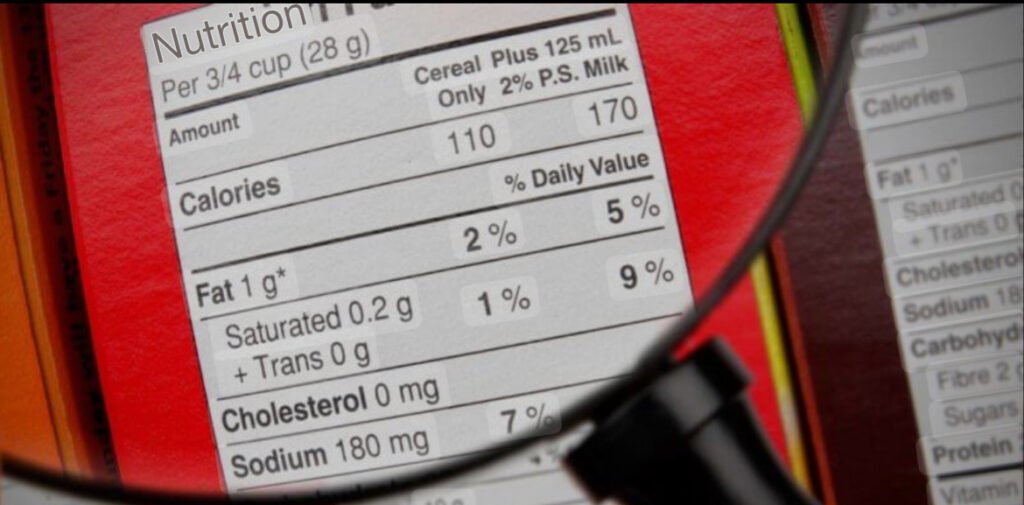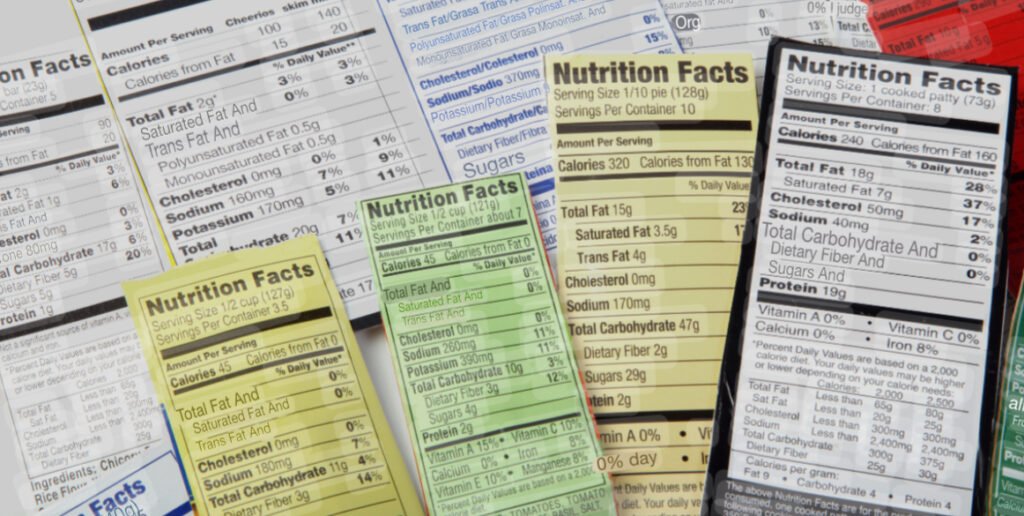Introduction: Why Reading Food Labels Is a Game-Changer for Your Health
If you want to take control of your diet, lose weight, boost energy, or manage a health condition, the secret may be hiding in plain sight—on the back of your food package. Learning how to read food labels gives you insight into what you’re really eating, beyond just the marketing claims on the front.
In a world filled with buzzwords like “natural,” “low-fat,” and “organic,” it’s easy to be misled by packaging. But the nutrition facts label and ingredients list offer a truth the front can’t hide. When you understand how to decode them, you empower yourself to make smarter, more informed decisions for healthy eating—just like a health expert would.
This in-depth guide covers 8 game-changing tips that will help you read food labels with confidence and accuracy, so you can take full ownership of your health and nutrition.
1. Don’t Skip the Serving Size — It Sets the Entire Context
The serving size listed at the top of the food label determines all the numbers that follow. Ignore it, and you’re likely miscalculating everything from calories to sodium.
What to Look For:
- The number of servings per container
- Serving size in measurable terms (e.g., 1 cup, 28g)
- Whether your actual portion is larger or smaller than one serving
Why It Matters:
If a package contains two servings but you eat the whole thing, you must double every number on the nutrition facts label—calories, fat, sugar, sodium, and more.
Pro Tip: Always compare your actual portion to the listed serving size to stay accurate.
2. Prioritize the Ingredients List — Less Is More
The ingredients list is where you find out what’s really inside your food. Ingredients are listed in descending order by weight, meaning the first few items make up the bulk of the product.
What to Look For:
- Whole, recognizable ingredients (e.g., oats, almonds, lentils)
- The first three ingredients—this tells you the most about the food’s core
- Hidden forms of sugar, sodium, and processed oils
Ingredients to Avoid:
- High-fructose corn syrup, artificial dyes, hydrogenated oils
- Words ending in “-ose” (glucose, dextrose) often indicate added sugars
- Chemical preservatives like BHT, BHA, or sodium nitrate
Pro Tip: The shorter and more pronounceable the list, the better. Health experts often aim for 5–10 ingredients max in packaged foods.
3. Don’t Be Fooled by the Front of the Package
Claims like “low-fat,” “gluten-free,” “keto,” or “made with whole grains” can distract you from what’s actually in the food. These are often marketing terms, not health guarantees.
What to Watch Out For:
- “Natural” doesn’t mean healthy or unprocessed
- “Light” can mean reduced fat or calories—but sometimes it’s just less flavor
- “Multigrain” doesn’t mean whole grain unless specified
Why It Matters:
Many foods labeled as healthy are loaded with sugar, salt, or unhealthy fats. The front is designed to sell; the back is where you read food labels like a health expert.
Pro Tip: Flip the package around before making a decision—always check the back first.
4. Learn to Identify Hidden Sugars
Sugar isn’t just “sugar” anymore. Food companies disguise it under various names to make it less obvious. Reading food labels closely helps you detect these hidden sweeteners.
Alternate Names for Sugar:
- Corn syrup, cane juice, dextrose, maltose, agave nectar
- Honey and molasses (natural, but still sugar)
- Fruit juice concentrate
Daily Limits:
The American Heart Association recommends no more than:
- 25g of added sugar for women
- 36g for men
Pro Tip: If multiple sugars appear in the top five ingredients, it’s likely the product is sugar-heavy, even if it doesn’t taste ultra-sweet.
5. Decode the Nutrition Facts Panel: What to Focus On First
The nutrition facts label gives you a breakdown of calories, fats, carbs, protein, and more. But to read food labels effectively, you need to know where to focus.
Key Sections to Prioritize:
- Calories per serving
- Saturated fat (limit) vs. unsaturated fat (prefer)
- Sodium (aim for <1,500–2,300mg per day)
- Added sugars vs. natural sugars
- Fiber (more is better—aim for 25–35g daily)
Nutrients to Get More Of:
- Dietary fiber
- Vitamin D, calcium, iron, and potassium
Pro Tip: Focus on nutrient density, not just calorie count. Health experts know that not all calories are created equal.
6. Understand Percent Daily Value (%DV)
The % Daily Value shows how much a nutrient in a serving contributes to your daily intake. Use it as a guide to quickly assess if a food is high or low in key nutrients.
How to Use It:
- 5% or less = Low
- 20% or more = High
What You Want High:
- Fiber, vitamins, calcium, iron, potassium
What You Want Low:
- Saturated fat, trans fat, added sugar, sodium
Pro Tip: A food that’s “low in calories” but “high in sodium” (e.g., canned soup) may not be a smart choice overall.
7. Watch Out for Serving Manipulation
Some food companies use manipulative serving sizes to make products seem healthier than they are. Ever see chips that say “only 150 calories,” but the bag has three servings? That’s serving size manipulation in action.
Telltale Signs:
- Serving sizes that don’t match reality (e.g., 2 tablespoons of cereal)
- High-calorie snacks “split” into 2–4 servings per bag
- Small snack bars that appear healthy but pack high sugar and fat
Why It Matters:
Without checking the realistic portion, you might be consuming double or triple what the label says.
Pro Tip: Be your own portion detective. A real health expert always multiplies numbers by servings if they eat more than one.
8. Look for Whole Food Indicators and Nutrient Density
When you read food labels, look for indicators that a food is nutrient-rich rather than nutrient-poor. That means it provides high levels of vitamins, minerals, fiber, and antioxidants without a lot of added sugar, sodium, or saturated fat.
Key Phrases to Look For:
- 100% whole grain (not just “multigrain”)
- No added sugar
- High in fiber
- No artificial ingredients
- Cold-pressed, organic, sprouted, fermented
Ideal Foods:
- Low in sodium
- High in fiber and protein
- No hydrogenated oils
- Made from simple, whole ingredients
Pro Tip: Aim to fill your diet with packaged items that read more like recipes than chemical formulas.
Bonus Tip: Use the “3 & 6 Rule” for Fast Label Reading
If you’re in a hurry and can’t scan every detail, try this shortcut:
- 3 or fewer added sugars
- 6 or fewer recognizable ingredients
This rule isn’t foolproof, but it’s an effective quick-check method used by many dietitians when scanning unfamiliar products.
Real-World Example: Comparing Two Granola Bars
Let’s apply these label reading tips to two granola bars:
Bar A:
- Serving size: 1 bar (45g)
- Calories: 190
- Sugars: 14g (12g added)
- Fiber: 1g
- Ingredients: Sugar, oats, corn syrup, soy protein isolate, canola oil
Bar B:
- Serving size: 1 bar (40g)
- Calories: 160
- Sugars: 5g (2g added)
- Fiber: 4g
- Ingredients: Oats, almonds, dates, chia seeds, sea salt
Conclusion: Bar B is the clear winner. It has fewer added sugars, more fiber, and whole food ingredients—exactly what a health expert looks for when they read food labels.
Why This Matters: The Real Power Behind Reading Food Labels
Learning how to read food labels is more than a skill—it’s a lifestyle tool. Whether you’re shopping for yourself or feeding a family, being able to decode a label gives you authority over your health.
When you read food labels like a health expert, you’re not only watching calories; you’re maximizing nutrient intake, preventing chronic disease, and making educated choices that align with your wellness goals.
The Benefits of Reading Labels:
- Helps with weight management
- Reduces risk of heart disease, diabetes, and hypertension
- Supports better digestion, immunity, and energy
- Increases awareness of ingredients and portion sizes
Final Thoughts: Empower Yourself Through Label Literacy
The ability to read food labels isn’t just for nutritionists or dietitians—it’s for everyone who wants to eat with intention. With so many food choices available in 2025, your best defense against processed junk is knowledge. Understanding the nutrition facts, serving sizes, ingredients, and marketing tricks can help you create a cleaner, more balanced diet without guesswork.
Imagine walking down a grocery aisle and instantly knowing what’s worth buying and what’s better left on the shelf. That’s what happens when you build label literacy into your daily routine.
Make it a habit. Check labels before purchasing, and teach your kids or loved ones how to do it too. Because when you know how to read food labels like a health expert, you’re not just making smarter food choices—you’re building a foundation for long-term health and happiness.
Take charge of your health today—start reading food labels like a pro and make confident, informed choices. Share this article or subscribe for more expert nutrition tips!








